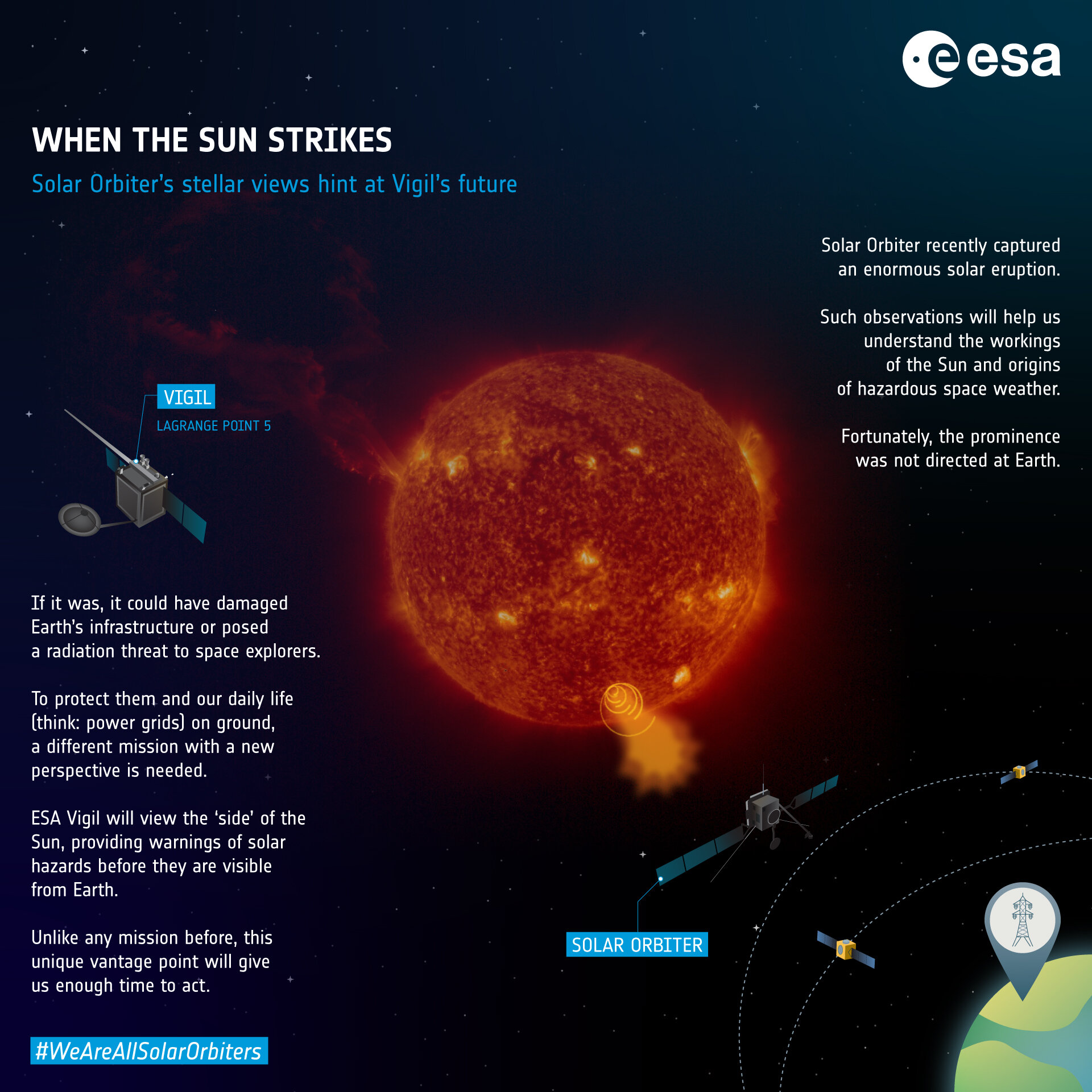Accept all cookies Accept only essential cookies See our Cookie Notice

About ESA
The European Space Agency (ESA) is Europe’s gateway to space. Its mission is to shape the development of Europe’s space capability and ensure that investment in space continues to deliver benefits to the citizens of Europe and the world.
Highlights
ESA - United space in Europe
This is ESA ESA facts Member States & Cooperating States Funding Director General Top management For Member State Delegations European vision European Space Policy ESA & EU Space Councils Responsibility & Sustainability Annual Report Calendar of meetings Corporate newsEstablishments & sites
ESA Headquarters ESA ESTEC ESA ESOC ESA ESRIN ESA EAC ESA ESAC Europe's Spaceport ESA ESEC ESA ECSAT Brussels Office Washington OfficeWorking with ESA
Business with ESA ESA Commercialisation Gateway Law at ESA Careers Cyber resilience at ESA IT at ESA Newsroom Partnerships Merchandising Licence Education Open Space Innovation Platform Integrity and Reporting Administrative Tribunal Health and SafetyMore about ESA
History ESA Historical Archives Exhibitions Publications Art & Culture ESA Merchandise Kids Diversity ESA Brand Centre ESA ChampionsLatest
Space in Member States
Find out more about space activities in our 23 Member States, and understand how ESA works together with their national agencies, institutions and organisations.
Science & Exploration
Exploring our Solar System and unlocking the secrets of the Universe
Go to topicAstronauts
Missions
Juice Euclid Webb Solar Orbiter BepiColombo Gaia ExoMars Cheops Exoplanet missions More missionsActivities
International Space Station Orion service module Gateway Concordia Caves & Pangaea BenefitsLatest
Space Safety
Protecting life and infrastructure on Earth and in orbit
Go to topicAsteroids
Asteroids and Planetary Defence Asteroid danger explained Flyeye telescope: asteroid detection Hera mission: asteroid deflection Near-Earth Object Coordination CentreSpace junk
About space debris Space debris by the numbers Space Environment Report In space refuelling, refurbishing and removingSafety from space
Clean Space ecodesign Zero Debris Technologies Space for Earth Supporting Sustainable DevelopmentLatest
Applications
Using space to benefit citizens and meet future challenges on Earth
Go to topicObserving the Earth
Observing the Earth Future EO Copernicus Meteorology Space for our climate Satellite missionsCommercialisation
ESA Commercialisation Gateway Open Space Innovation Platform Business Incubation ESA Space SolutionsLatest
Enabling & Support
Making space accessible and developing the technologies for the future
Go to topicBuilding missions
Space Engineering and Technology Test centre Laboratories Concurrent Design Facility Preparing for the future Shaping the Future Discovery and Preparation Advanced Concepts TeamSpace transportation
Space Transportation Ariane Vega Space Rider Future space transportation Boost! Europe's Spaceport Launches from Europe's Spaceport from 2012Latest

When the Sun strikes
Thank you for liking
You have already liked this page, you can only like it once!
In February 2022, the ESA/NASA Solar Orbiter captured the longest solar prominence eruption ever observed in a single image together with the full solar disk.
Solar Orbiter was in the right place at the right time to catch this stunning space weather event and record observations that will help us improve our understanding of the inner workings of the Sun. But Solar Orbiter is dedicated primarily to other aspects of solar science – it won’t always have its attention on space weather.
Fortunately, this prominence was not directed at Earth. If it was, it could have damaged Earth’s infrastructure or posed a radiation threat to space explorers. To protect them and our daily life on the ground, a different mission with a new perspective on the Sun is needed.
Enter ESA Vigil, ESA’s upcoming space weather mission that will keep a continuous watch over the ‘side’ of the Sun, providing advance warnings of solar hazards before they are visible from Earth.
From its vantage point at the fifth ‘Lagrange point’ – L5 – ESA Vigil will help us forecast space weather and protect Earth’s infrastructure, satellites and inhabitants from hard to predict and violent solar events like solar flares and coronal mass ejections.
Protecting modern life
We are now reliant on interlinked technologies, in space and on Earth, for our everyday lives. But this infrastructure, and all that relies on it, is vulnerable.
Solar storms can damage power grids, disrupt telecommunications and threaten satellites and the vital services they provide. At the same time, as we launch ever-more satellites into orbit, we are also creating increasing amounts of debris, dramatically increasing the risk of collision for current and future missions: our success in space could be our downfall.
As part of ESA’s Vision for the future, the new Protect ‘accelerator’ will ensure the resilience of technologies on which modernity depends. By detecting and providing advance warning of oncoming solar storms, we can protect our infrastructure in space and on the ground. By fostering the sustainable use of orbits around Earth – a finite and limited resource – we can ensure the benefits of space will remain accessible to future generations.
-
CREDIT
ESA -
LICENCE
ESA Standard Licence

Introducing: ESA Vigil

Introducing: ESA Vigil (with embedded subtitles)

ESA's space weather mission - ESA Vigil

Solar warning — ESA's future Vigil mission















 Germany
Germany
 Austria
Austria
 Belgium
Belgium
 Denmark
Denmark
 Spain
Spain
 Estonia
Estonia
 Finland
Finland
 France
France
 Greece
Greece
 Hungary
Hungary
 Ireland
Ireland
 Italy
Italy
 Luxembourg
Luxembourg
 Norway
Norway
 The Netherlands
The Netherlands
 Poland
Poland
 Portugal
Portugal
 Czechia
Czechia
 Romania
Romania
 United Kingdom
United Kingdom
 Slovenia
Slovenia
 Sweden
Sweden
 Switzerland
Switzerland
























